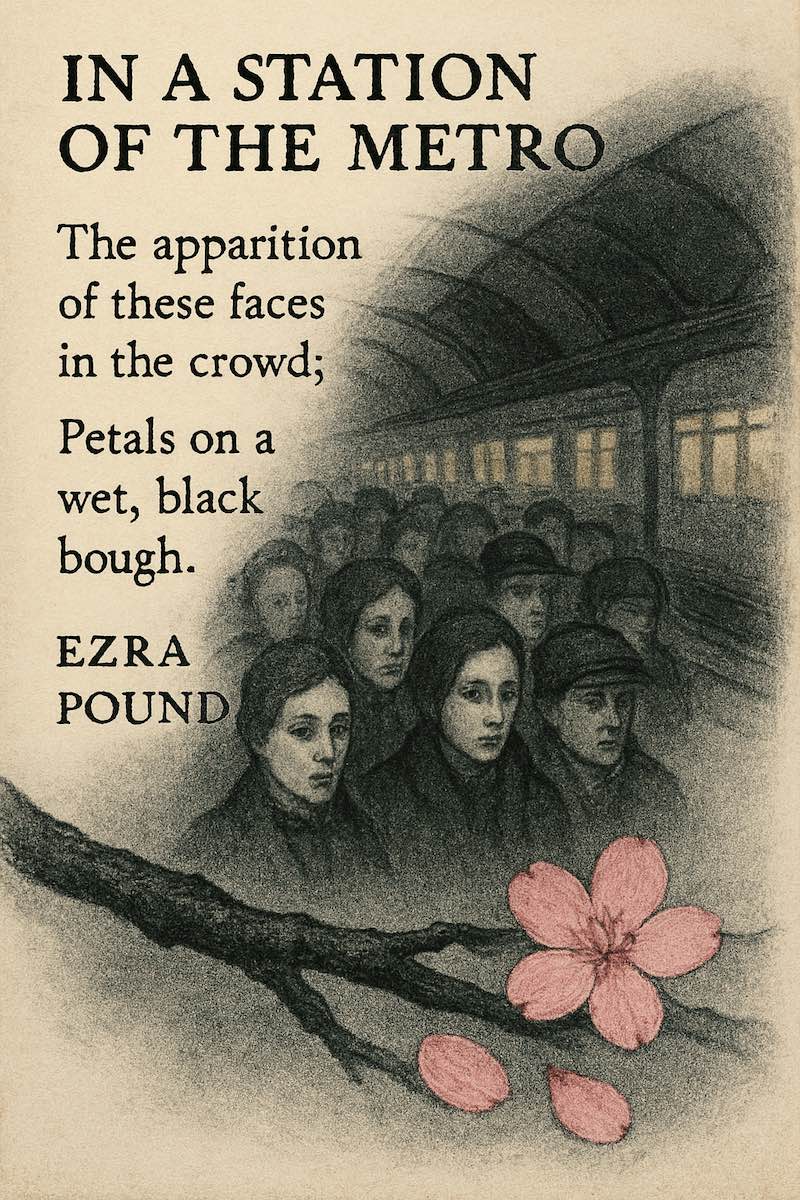Apparitions and Boughs: Ezra Pound's "In a Station of the Metro"
Ezra Pound’s “In a Station of the Metro,” first published in 1913, is a cornerstone of literary Modernism and the ultimate example of the Imagist movement. Clocking in at a mere fourteen words, it is a perfect example of why this poem is a must-listen for The Concise Verse. It captures a single, fleeting moment of profound perception, transforming the mundane rush of a subway platform into a sharp, startling piece of art. Pound, an American expatriate in London, managed to distill two years of observation into two breathtaking lines, creating a visual and emotional equation that remains endlessly fascinating.
The Poem
The apparition of these faces in the crowd;
Petals on a wet, black bough.
The Insight: The Equation of Perception
In his own words, Pound described this poem as the "presentation of such a 'sudden emotion of delight.'" It’s an intellectual and emotional equation—not a description. The entire power of the poem rests on the single semicolon, which acts as the mathematical 'equals' sign. It links the urban, ghost-like appearance of the commuting faces ("The apparition of these faces in the crowd") to the vivid, natural beauty of pink blossoms sticking to a dark, wet branch ("Petals on a wet, black bough").
Pound achieved this radical conciseness by adhering strictly to the three tenets of Imagism: 1) Direct treatment of the "thing," whether subjective or objective; 2) To use absolutely no word that does not contribute to the presentation; and 3) To compose in the sequence of the musical phrase, not in the sequence of a metronome. The poem contains no verbs, which locks the entire scene into a perpetual, suspended present. The faces are not like petals—they are petals, or at least, the apparition of the faces is equal to the petals.
The poem’s deeper effect is the juxtaposition of two disparate worlds: the underground, industrial, and somber reality of the Paris Metro, and the natural, beautiful, and ephemeral imagery of a wet, spring bough. The faces, pale and fleeting in the dim light, are given a moment of fragile beauty, but the nature imagery carries a somber undertone. Petals fall and decay, suggesting the transitory nature of human life and existence, much like the brief stop of a train. This extreme compression is heavily influenced by the Japanese Hokku (an early form of haiku), proving that a great emotion can be delivered with the utmost economy of language.

